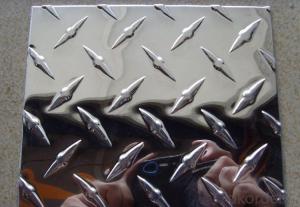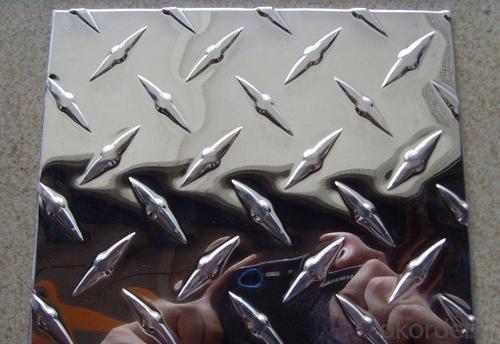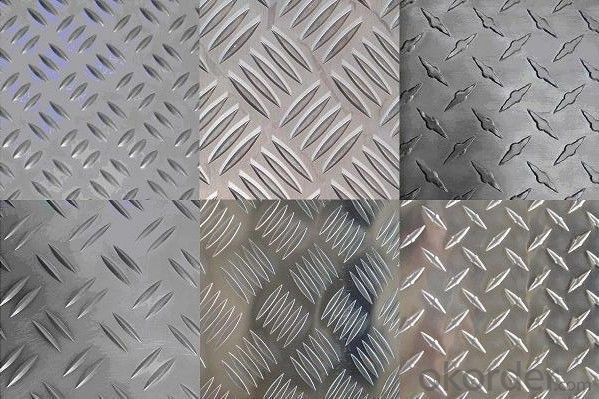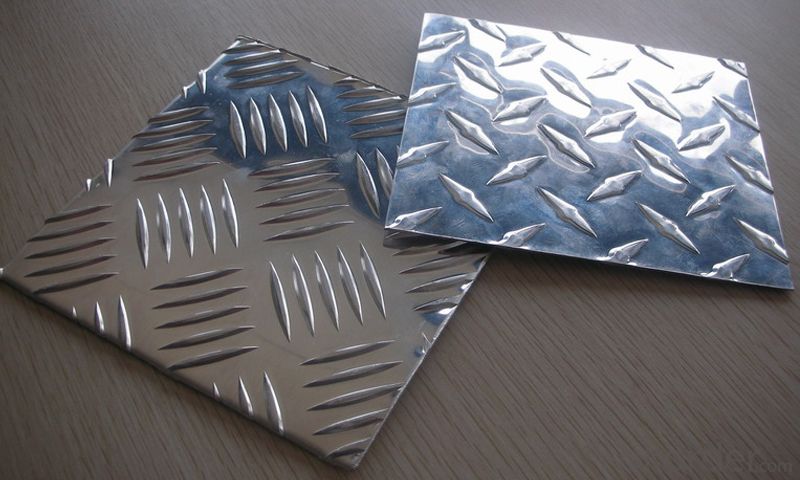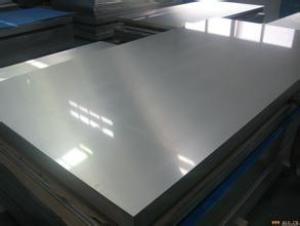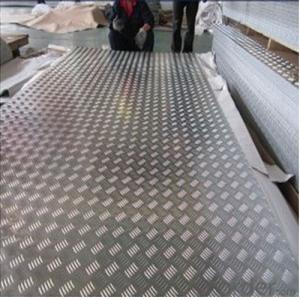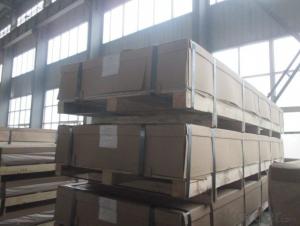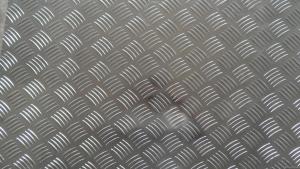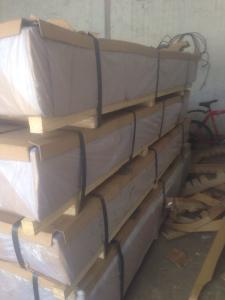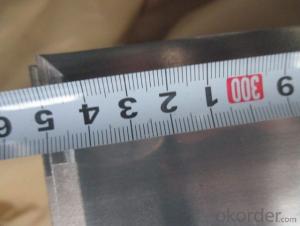High Quality Aluminum Diamond Plate Sheets - Factory Manufactured at Low Prices
- Loading Port:
- Shanghai
- Payment Terms:
- TT OR LC
- Min Order Qty:
- 5 m.t.
- Supply Capability:
- 5000 m.t./month
OKorder Service Pledge
OKorder Financial Service
You Might Also Like
lProduct Description:
a.Available Thickness:
Tread Plate Alloy | Baseboard thickness | Thickness of the pattern |
| 1xxx series | 1.0-1.5mm | 0.3-0.5mm |
| 1.5-5.0mm | 0.6-1.3mm | |
| 2xxx series | 1.2-1.5mm | 0.3-0.5mm |
| 1.5-5.0mm | 0.6-1.2mm | |
| 3xxx series | 1.5-2.0mm | 0.6-1.0mm |
| 2.0-4.5mm | 0.8-1.2mm |
b.Mechanical Properties:
| Five bar tread plate | Bend | Tensile strength(Mpa) | Elongation(%) |
| 3003 H114 | 1/2 closed | 164-170 | 13-13.5 |
c.Chemical Composition:
| Five bar 3003H114 | Si(%) | Fe(%) | Cu(%) | Mg(%) | Cr(%) | Mn(%) | Zn(%) | Ti(%) | Al(%) | Standard |
| Min | 0.145 | 0.464 | 0.058 | <0.03< span=""> | <0.005< span=""> | 1.081 | <0.03< span=""> | 0.0346 | else | GB/T3880-2006 |
| Max | 0.159 | 0.476 | 0.076 | 1.099 | 0.0357 |
l Packaging & Delivery
Packaging detail: First, plastic cloth; Second, Pearl Wool ; Third, wooden cases with dry agent ,without fumigation, wooden pallets
Delivery detail: Within 25days
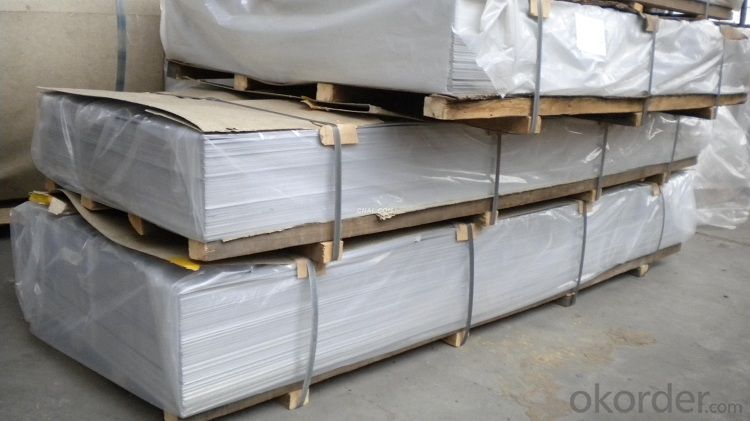
l Company Profile
CNBM International Corporation, China National Building Materials (Group) Corporation, is one of the largest companies in China building material & equipment industry, with 42,800 employees and sales in 2005 of US Dollar 4.395 billion. In 2006, China National Building Material Company Limited was listed on Hong Kong Stock Market with the stock code as 3323.
The business scope of CNBM covers from manufacturing and sales of a series of building materials to scientific research and design, import and export trade. In many of these fields, CNBM is playing the leading role.
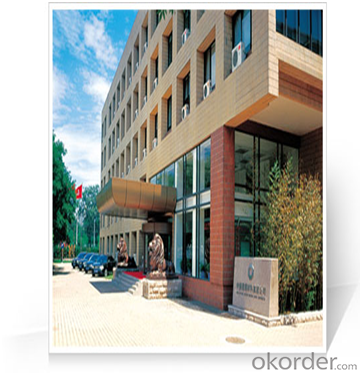
l Product Images and Application

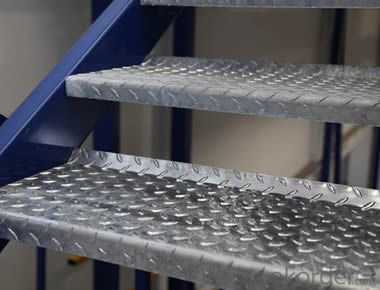
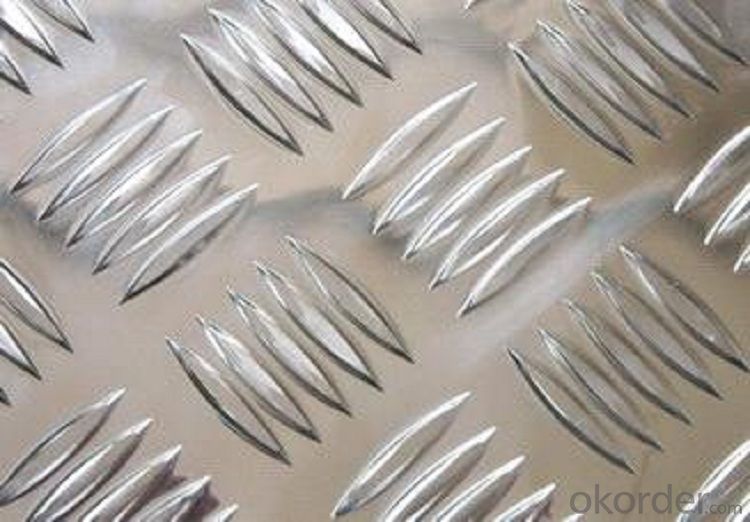
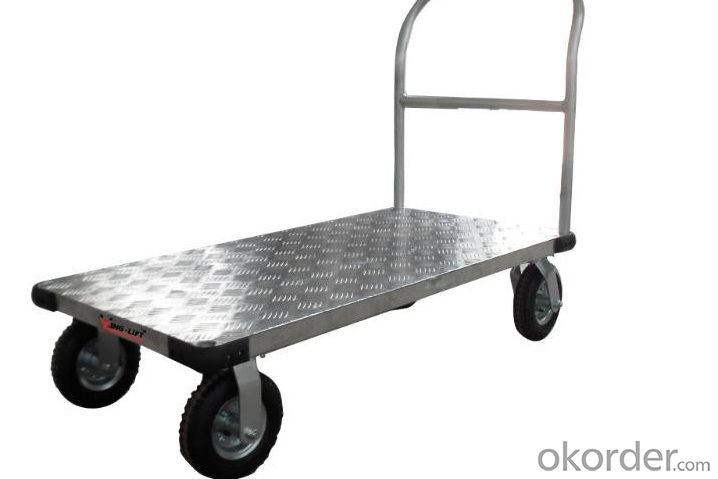
l FAQ
Q: Do you provide free samples?
A: Yes, free samples will be sent to you on freight at destination.
Q: Can I get your latest products catalogue?
A: Yes, it will be sent to you in no time.
Q: What is the MOQ?
A: 5 tons
Q: What are your payment terms?
A: We accept L/C, T/T.
l Contact Us
Name: Amanda Qian
Email: amandaqian@okorder.com
- Q: This question asks for recent applications of aluminum in the construction industry.
- <p>Aluminum has found new uses in construction due to its lightweight, durability, and sustainability. It's used in curtain walls, window frames, and doors for its strength and resistance to corrosion. Aluminum is also utilized in modular construction, where prefabricated components can be quickly assembled on-site. Its high thermal conductivity makes it suitable for energy-efficient building envelopes. Additionally, aluminum's recyclability and low environmental impact make it a popular choice for green buildings. New technologies have also enabled the use of aluminum in 3D-printed structures, offering innovative design possibilities.</p>
- Q: Is aluminum a suitable material for use in electronic equipment?
- <p>Yes, aluminum is widely used in electronic equipment due to its excellent electrical conductivity, lightweight nature, and high thermal conductivity. It is commonly used in heat sinks, cases, and connectors. However, it is not as conductive as copper, so it is often used in applications where its other properties are more critical. Additionally, aluminum's corrosion resistance makes it a durable choice for various electronic components.</p>
- Q: This question asks whether it is safe to use aluminum cookware for pregnant women or individuals with health conditions.
- <p>While aluminum cookware is generally safe for most people, there are concerns about its potential health effects. Aluminum has been linked to cognitive issues and Alzheimer's disease, although the evidence is not conclusive. For pregnant women and those with health conditions, it is advisable to err on the side of caution. Opt for cookware made from stainless steel, cast iron, or non-stick materials without aluminum. If you must use aluminum cookware, avoid acidic or alkaline foods and ensure the cookware is not scratched, as this can increase aluminum leaching into food.</p>
- Q: Exploring the impact of reducing aluminum usage on global warming.
- <p>Using less aluminum in our daily lives can contribute to reducing global warming, albeit marginally. Aluminum production is energy-intensive, requiring significant amounts of electricity, often from fossil fuels. This process generates greenhouse gas emissions. By reducing demand for aluminum, we can potentially lower the energy consumption and emissions associated with its production. However, aluminum's impact on global warming is relatively small compared to other industries like transportation, energy production, and agriculture. Thus, while reducing aluminum use is beneficial, it should be part of a broader strategy to combat climate change that includes transitioning to renewable energy, improving energy efficiency, and adopting sustainable agricultural practices.</p>
- Q: This question asks about the methods and steps involved in processing aluminum.
- <p>Aluminum processing involves several key steps: extraction from bauxite ore, refining, and fabrication. Initially, bauxite is mined and then processed to remove impurities. The Bayer process is commonly used to extract alumina (aluminum oxide) from bauxite by dissolving it in a caustic soda solution. The alumina is then smelted in a reduction furnace using the Hall-H茅roult process, where it is dissolved in molten cryolite and electrolyzed to produce pure aluminum. Finally, the aluminum is shaped and fabricated into various products through methods such as casting, extrusion, or rolling.</p>
- Q: Is it possible to utilize aluminum in the construction of airplanes to enhance fuel efficiency?
- <p>Yes, using aluminum can make airplanes more fuel efficient. Aluminum is lightweight, which reduces the overall weight of the aircraft, leading to lower fuel consumption. Additionally, aluminum has good strength-to-weight ratio and is resistant to corrosion, making it a popular material in aircraft construction. However, it's important to note that the use of aluminum must be balanced with other materials to ensure structural integrity and safety.</p>
- Q: This question asks for an explanation of the process involved in the production of aluminum foil.
- <p>Aluminum foil is made through a process that starts with the extraction of aluminum from its ore, bauxite. The bauxite is refined to produce aluminum oxide, which is then reduced to aluminum using the Hall-H茅roult process. The aluminum is then melted and cast into large ingots. These ingots are heated and rolled into thin sheets using large industrial rolling mills. The aluminum is rolled multiple times, each pass reducing its thickness until it reaches the desired foil thickness. The final thin sheets are then cut and packaged as aluminum foil. This process requires precision and control to ensure the foil is uniform and free of defects.</p>
- Q: This question asks for an overview of the environmental concerns associated with the manufacturing process of aluminum.
- <p>The production of aluminum is associated with several environmental issues. One major concern is the high energy consumption required for the smelting process, which contributes to greenhouse gas emissions. The process also generates significant amounts of waste, including red mud, a hazardous byproduct that can contaminate soil and water if not properly managed. Additionally, deforestation and habitat destruction occur due to the mining of bauxite, the primary ore of aluminum. Air pollution is another issue, as the production process releases particulates and other pollutants into the atmosphere. Lastly, the depletion of non-renewable resources, such as fossil fuels used in the smelting process, is a long-term environmental concern related to aluminum production.</p>
- Q: This question asks for methods to decrease the intake or contact with aluminum, a common element that can have health implications if exposed to in large amounts.
- <p>To reduce aluminum exposure, consider the following strategies: 1) Use a stainless steel or glass water bottle instead of aluminum cans. 2) Avoid non-stick cookware with aluminum as a base layer. 3) Choose natural deodorants and antiperspirants without aluminum compounds. 4) Opt for glass or stainless steel food storage containers over aluminum foil or cans. 5) Limit consumption of processed foods, as they often contain aluminum-based additives. 6) Filter your drinking water to remove aluminum. 7) Be mindful of personal care products and choose those free from aluminum. By implementing these changes, you can significantly lower your daily aluminum intake.</p>
- Q: Is aluminum a suitable material for use in electronic components or devices?
- <p>Yes, aluminum is used in electronics, primarily for its excellent thermal conductivity and electrical conductivity. It is commonly used in heat sinks to dissipate heat from electronic components, such as CPUs and power transistors. Additionally, aluminum is utilized in capacitors and as a conductor in wiring due to its low electrical resistance. However, it is not used as widely as copper for electrical conductivity applications due to copper's superior properties.</p>
Send your message to us
High Quality Aluminum Diamond Plate Sheets - Factory Manufactured at Low Prices
- Loading Port:
- Shanghai
- Payment Terms:
- TT OR LC
- Min Order Qty:
- 5 m.t.
- Supply Capability:
- 5000 m.t./month
OKorder Service Pledge
OKorder Financial Service
Similar products
Hot products
Hot Searches
Related keywords
